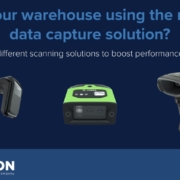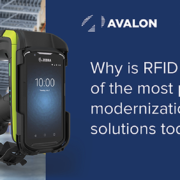Production floors in manufacturing plants need fast and accurate workflows that efficiently manage assets and deliver products. Automation is beneficial in boosting efficiency with control over work-in-process, traceability for recalls, and quality checks before products leave the production floor. Despite labor shortages, studies show that manufacturers still produce 44% more goods than 30 years ago due to factory automation solutions including automated data capture and digitized reporting. Therefore, it is no surprise that an estimated 42% of the time spent on manufacturing tasks will be automated by the end of the year. To remain competitive in the Digital Age, manufacturing facilities must consider the benefits of automating workflows as well as the consequences of delaying modernization.
Lack of automation within the production operation pressures your workforce to keep up with high demand influxes without agile tools. Enhanced systems such as automated data capture and sharing can manage operations, track stock levels, and monitor asset performance all in real-time for unbroken productivity. Although automation may take different forms in different industries, businesses can expect the following benefits from intelligent modernization:
- Increased product accuracy and quality control – Data automation tools like mobile computers can deliver consistent accuracy and speed with minimal variation, improving production rates and product accuracy. You can avoid higher costs from inaccurate production with mobile computers that provide faster-than-ever barcode capture and multi-distance scan engines that improve track and trace on the floor.
- Boosted versatility – Mobile technology like computers and tablets can come equipped with powerful extensions that allow businesses to increase security, improve device manageability and more. Expanded features enable manufacturers to capture up to 100 barcodes with a single scan to improve worker efficiency, while data automation delivers predictive analytics and rich data capture so your floor can stay flexible and adapt to rising demands.
- Faster return on investment – Dependable automation solutions reduce lead times, lower operating costs and improve output. Rugged mobile computers and tablets out-perform consumer devices and deliver dependable performance to improve the device lifecycles and deliver a higher ROI. Devices like this also help remove the errors of manual operations to deliver controlled and accurate workflows.
Speed and accuracy are the top priorities for the production floor. Mobile computers and tablets can help deliver real-time performance to manage operations and improve productivity. Automated mobile computing and scanning solutions deliver:
- Faster and more efficient workflows
- Quality checks and control
- Enhanced visibility and flexibility for recalls
- Faster cycle times
Automation is quickly taking over manufacturing plants to streamline productivity on the production floor. Learn more about how you can leverage track and trace solutions and rich data capture in your facility.






